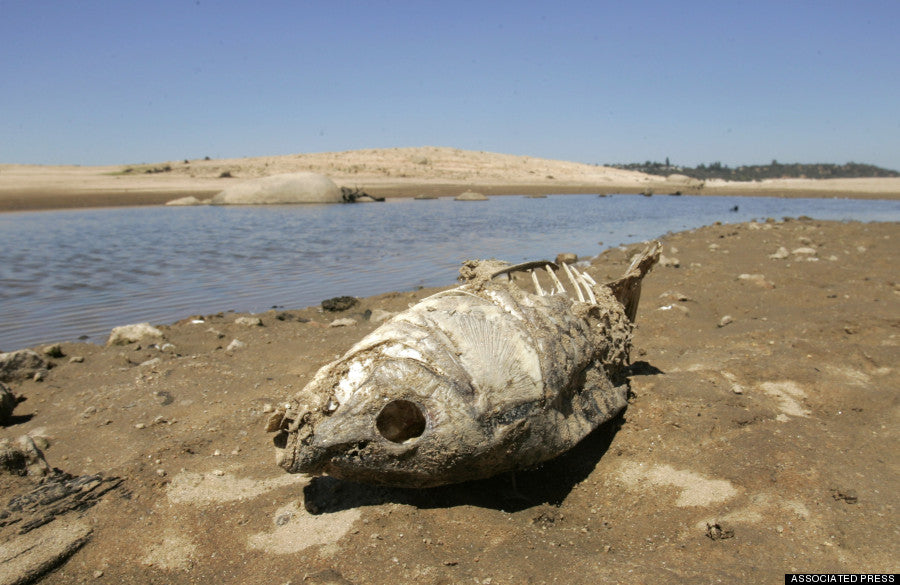
This post is the first installment of a three-part series highlighting the 2014 California Drought.
All the western states, including California, are naturally subject to periods of drought. But according to B. Lynn Ingram, University of California Earth Science professor, a study of tree rings shows California’s current drought to be the most severe in the last 500 years. Not only did California receive zero rainfall this January (normally the rainiest month of the year), recent past conditions have illustrated the decline in moisture. In 2013, California received a total of 7 inches of rain; the average yearly total is 22 inches. The Sierra snowpack, which gives California 1/3 of its water, was 88% below normal as of January 30, 2013. In early 2014, Governor Jerry Brown declared the state a “primary natural disaster area,” and President Obama announced over $190 million in drought aid. With almost twice as many fires and acres burned between January and March of this year than last year, California needed more than light rain and overcast skies to pull them from this drought. Unfortunately, over four months later, California has not seen the type of precipitation to pull them out of the drought and reduce wildfires in the state. The lack of rain over the past few months has led some, such as the Santa Clara Valley Water District, to alert cities and companies that only 80 percent of requested treated drinking water will be provided for the rest of the year. The companies and cities losing this water typically provide it for about 1.5 million people. However, it’s not only thirsty cities receiving less treated drinking water, but irrigated farmlands are forced to turn to alternate sources of water such as wells. During our lifetimes, we’ve become accustomed to California being the garden of the nation, producing nearly half of the fruit, nuts, and vegetables for the whole country. The sight of fallow fields, blowing dust, or browned seedlings failing in the heat is an image we associate more with the Dust Bowl of Oklahoma back in the 1930s than with California. But that may not be the case this year unless there’s a significant change in the weather. National Journal reporter, Marina Koren, believes that in order “to break its historic drought, California would need to see 9 to 15 inches of precipitation in one month. That’s more than half a year’s worth of average rainfall for the state.” This lack of precipitation for the state has created water restrictions. A water restriction for both irrigation and drinking (whether due to drought, a chemical spill, or another emergency) is a great reason to keep your [water storage] up to date. Check out these articles to learn more about the importance of water storage: -Sharon, Kim, and Angela Come back in the next couple of days to check out the rest of our California Drought Series: Part II “The Effects of CA's Driest Year" Part III "How does the CA Drought Effect your Grocery List?" Photo Courtesy of the Huffington Post via the Associated Press Sources: http://www.mercurynews.com/science/ci_25411117/california-drought-silicon-valley-cities-and-farms-hit http://cdfdata.fire.ca.gov/incidents/incidents_stats http://www.wunderground.com/cgi-bin/Replaceweather/hdfForecast?query=california&MR=1 www.usatoday.com/story/theoval/2014/02/14/obama-california-drought-aid-vilsack/5479121 www.nytimes.com/2014/02/15/us/politics/obama-to-announce-aid-for-drought-racked-california.html?r=0 www.westernfarmpress.com/blog/obama-administration-misses-boat-drought-assistance
1 comment
YH
California had its chance to address the drought problem decades ago when I used to live there. No one, I repeat, NO ONE should feel sympathy for Californians. They should have been building water de-salinization plants all along the California coast to provide potable drinking water years ago. Instead Californians allowed the putrid rabid liberal progressive environmentalists to dictate policy, block plant construction, and withhold building permits all in the name of protecting butterflies, beetles, and shrimp from these water plants. When Californians begin to feel the pain of thirst, maybe then they’ll throw the lunatic environmentalists in prison where they belong.